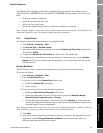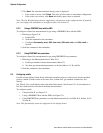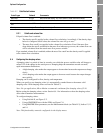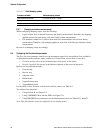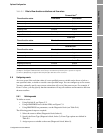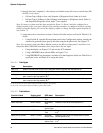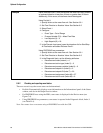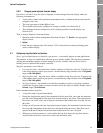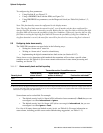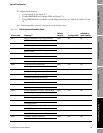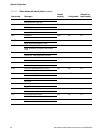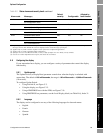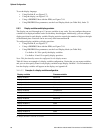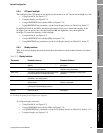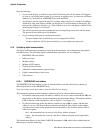
Configuration and Use Manual 61
Optional Configuration
Required Configuration Optional ConfigurationUsing the TransmitterUsing a PROFIBUS Host Required Configuration Optional ConfigurationUsing the TransmitterUsing a PROFIBUS Host Required Configuration Optional ConfigurationUsing the TransmitterUsing a PROFIBUS Host Required Configuration Optional ConfigurationUsing the TransmitterUsing a PROFIBUS Host
8.6.3 Changing event setpoints from the display
For Event 1 or Event 2 only, the value of Setpoint A can be changed from the display, under the
following circumstances:
• A mass total, volume total, petroleum measurement total, or enhanced density total must be
assigned to the event.
• The event type must be either High or Low.
• The assigned total must be configured as a display variable (see Section 8.9.3).
• The transmitter must be configured to allow resetting totalizers from the display (see
Section 8.9.5
).
Then, to change Setpoint A from the display:
1. Referring to the totalizer management flowchart in Figure 7-3,
Scroll to the appropriate
display screen.
2.
Select.
3. Enter the new setpoint value. See Section 3.5.5 for instructions on entering floating-point
values with the display.
8.7 Configuring slug flow limits and duration
Slugs – gas in a liquid process or liquid in a gas process – occasionally appear in some applications.
The presence of slugs can significantly affect the process density reading. The slug flow parameters
can help the transmitter suppress extreme changes in process variables, and can also be used to
identify process conditions that require correction.
Slug flow parameters are as follows:
• Low slug flow limit – the point below which a condition of slug flow will exist. Typically, this
is the lowest density point in your process’s normal density range. Default value is
0.0 g/cm3;
range is
0.0–10.0 g/cm3.
• High slug flow limit – the point above which a condition of slug flow will exist. Typically, this
is the highest density point in your process’s normal density range. Default value is
5.0 g/cm3;
range is
0.0–10.0 g/cm3.
• Slug flow duration – the number of seconds the transmitter waits for a slug flow condition
(outside the slug flow limits) to return to normal (inside the slug flow limits). Default value is
0.0 sec; range is 0.0–60.0 sec.
If the transmitter detects slug flow:
• A slug flow alarm is posted immediately.
• During the slug duration period, the transmitter holds the mass flow rate at the last measured
pre-slug value, independent of the mass flow rate measured by the sensor. The reported mass
flow rate is set to this value, and all internal calculations that include mass flow rate will use
this value.
• If slugs are still present after the slug duration period expires, the transmitter forces the mass
flow rate to
0, independent of the mass flow rate measured by the sensor. Mass flow rate is
reported as
0 and all internal calculations that include mass flow rate will use 0.
• When process density returns to a value within the slug flow limits, the slug flow alarm is
cleared and the mass flow rate reverts to the actual measured value.



